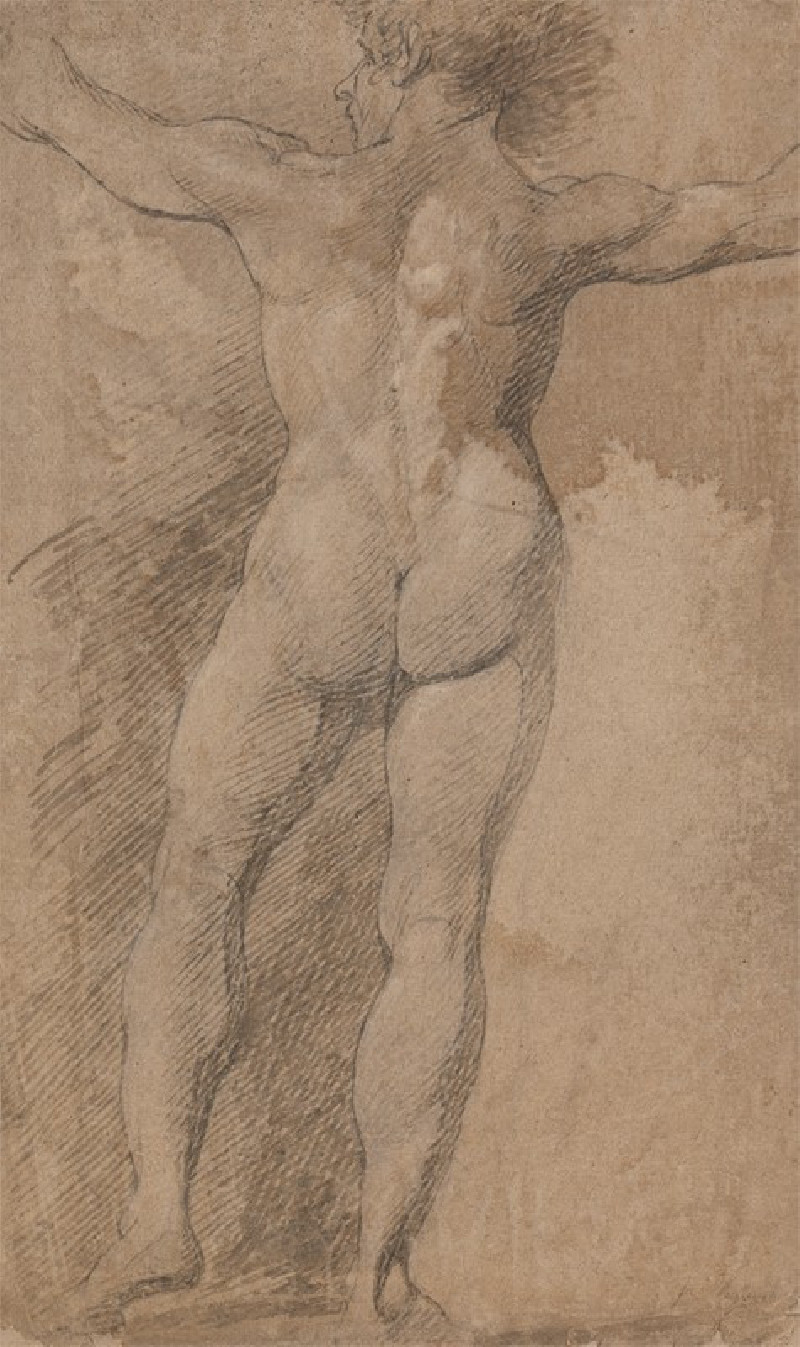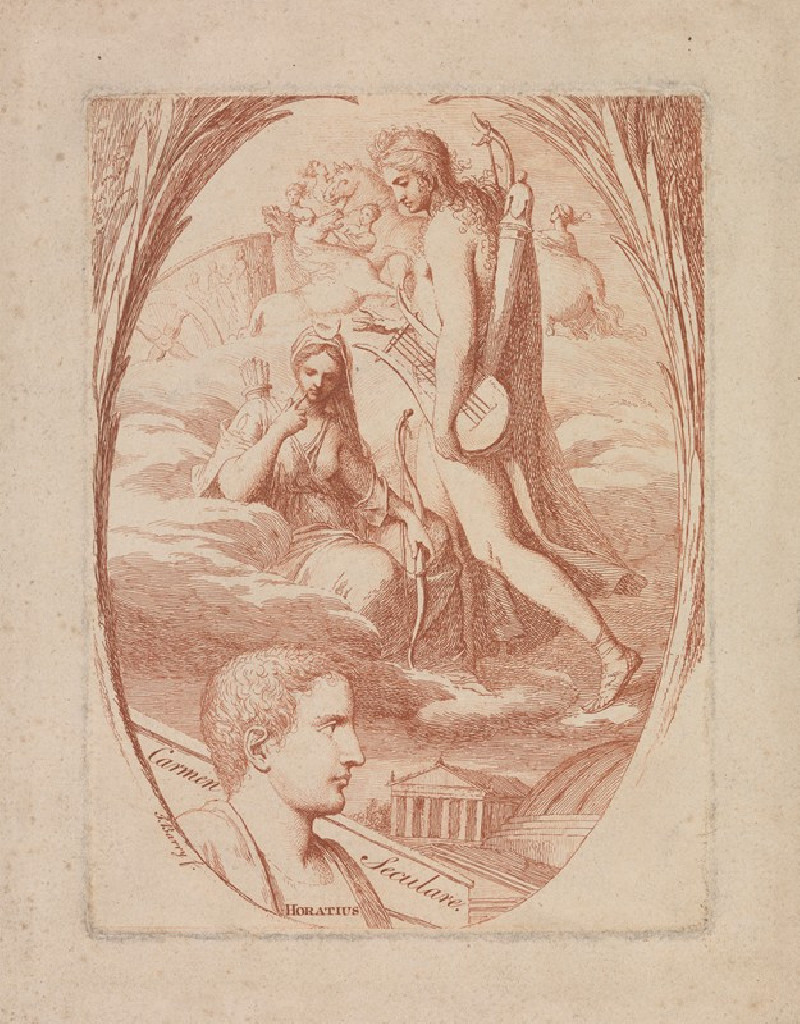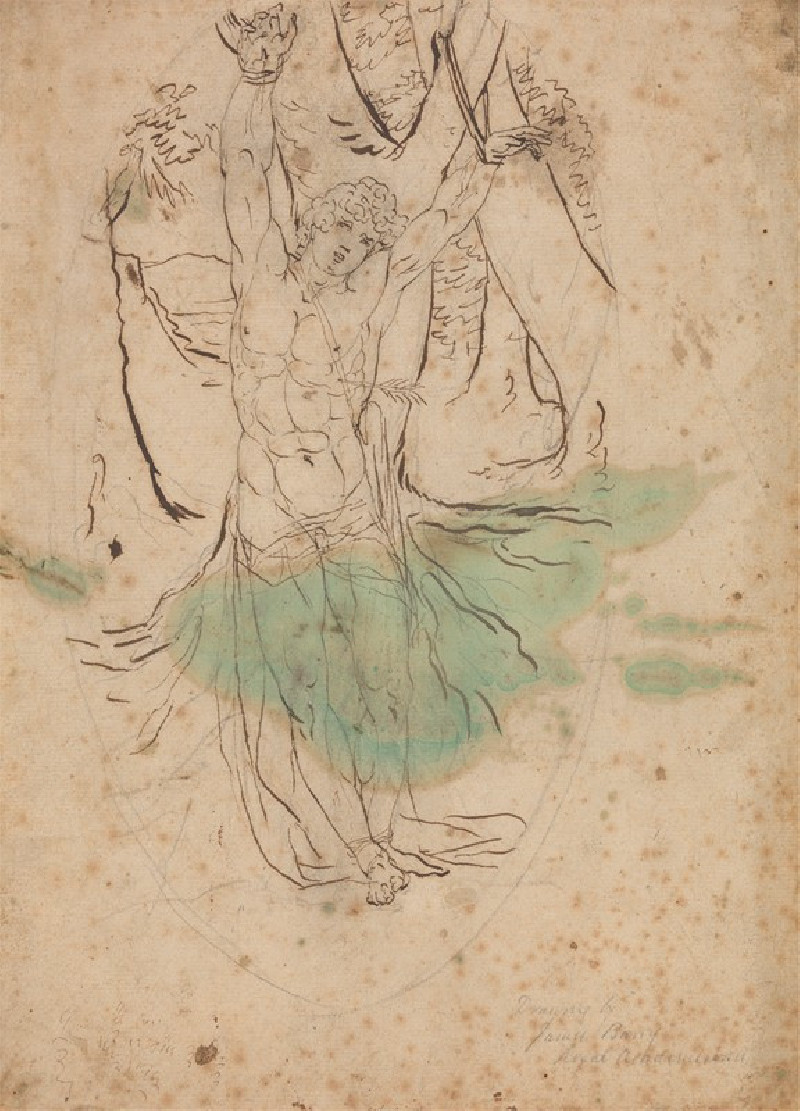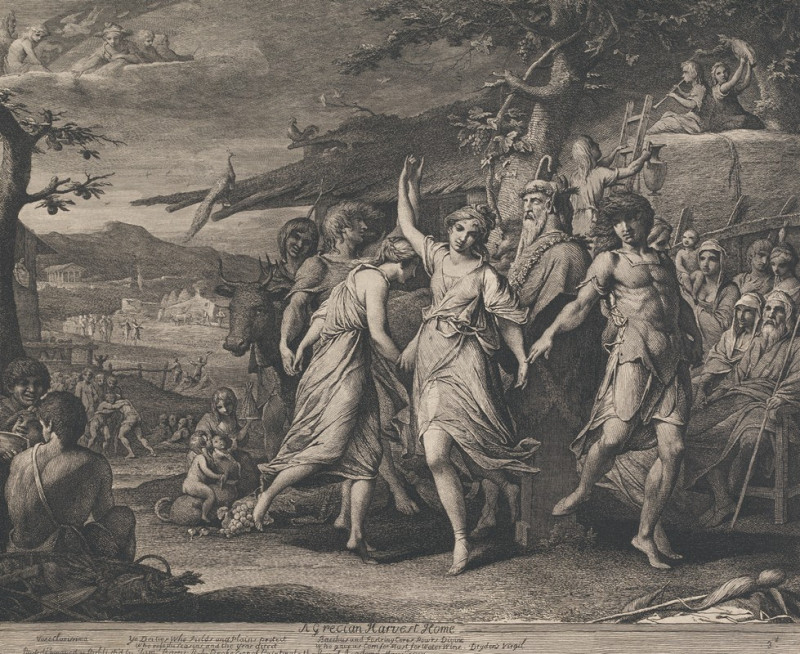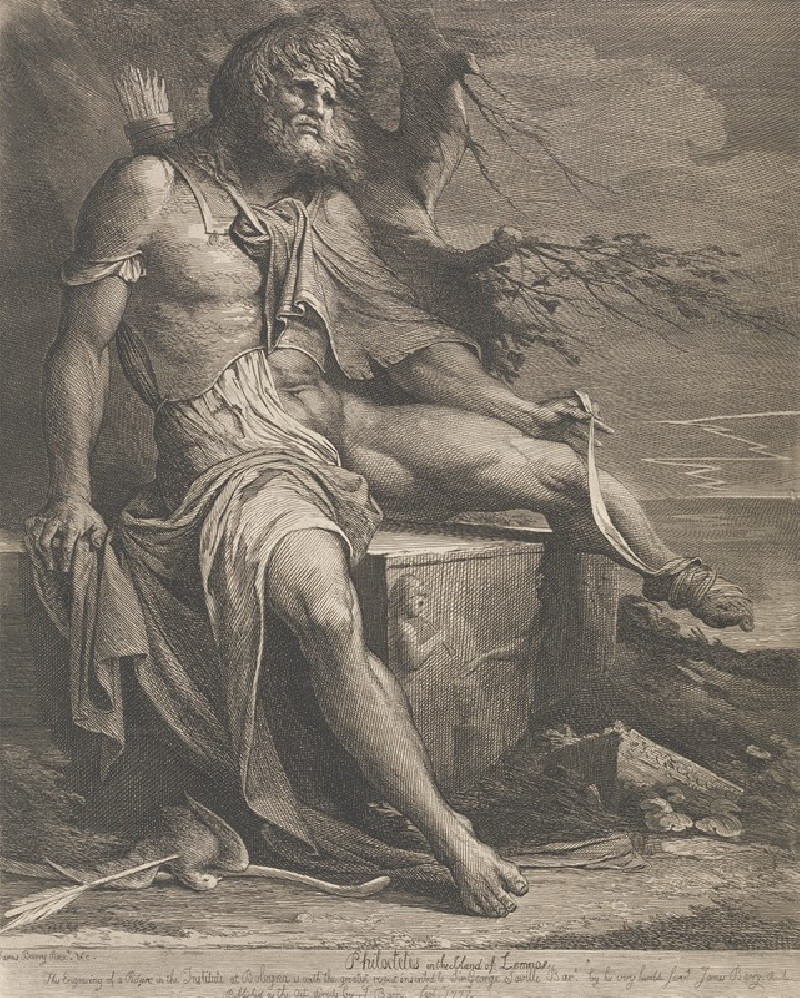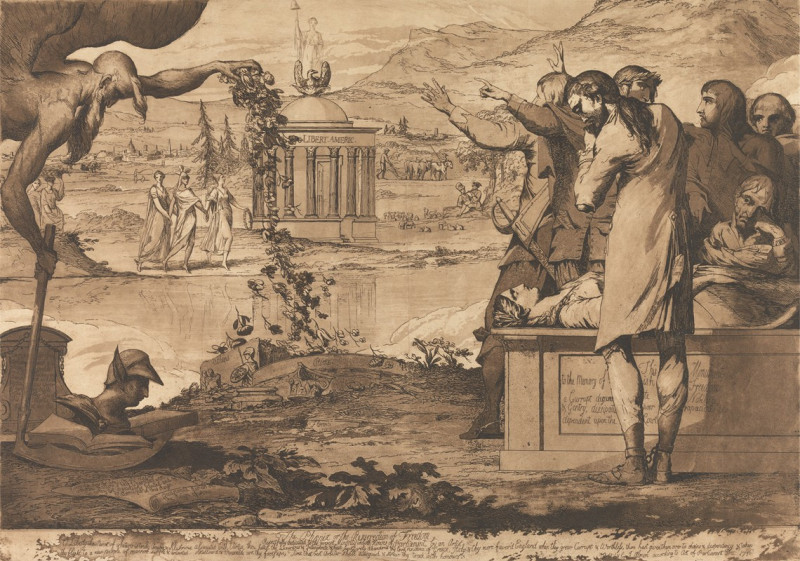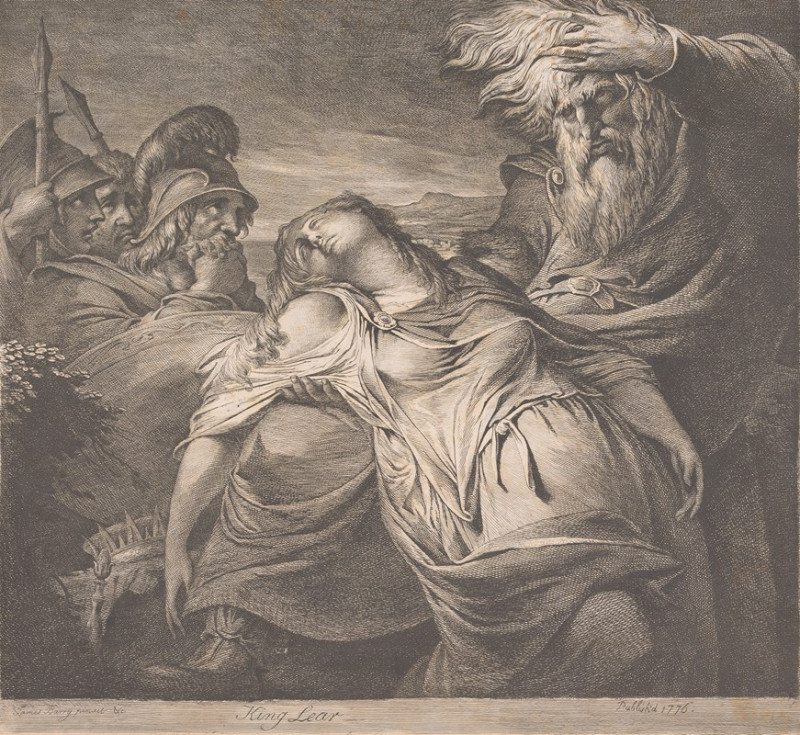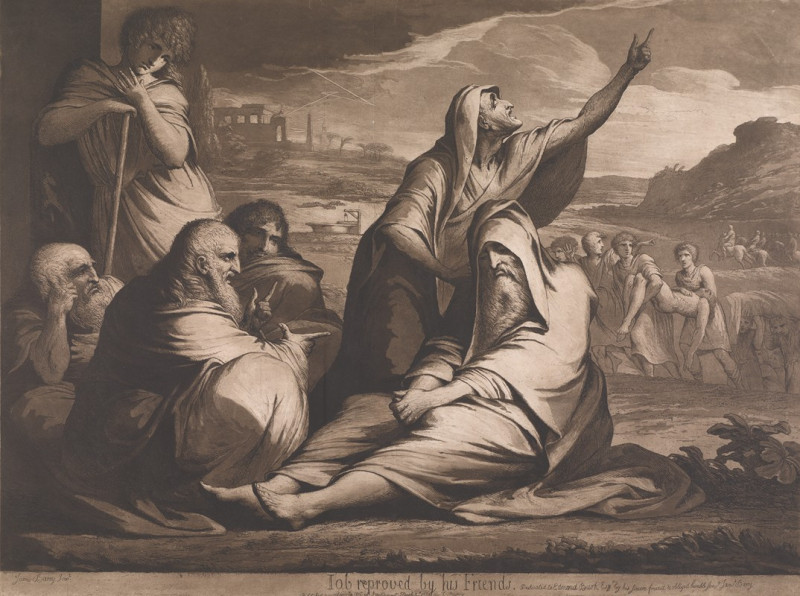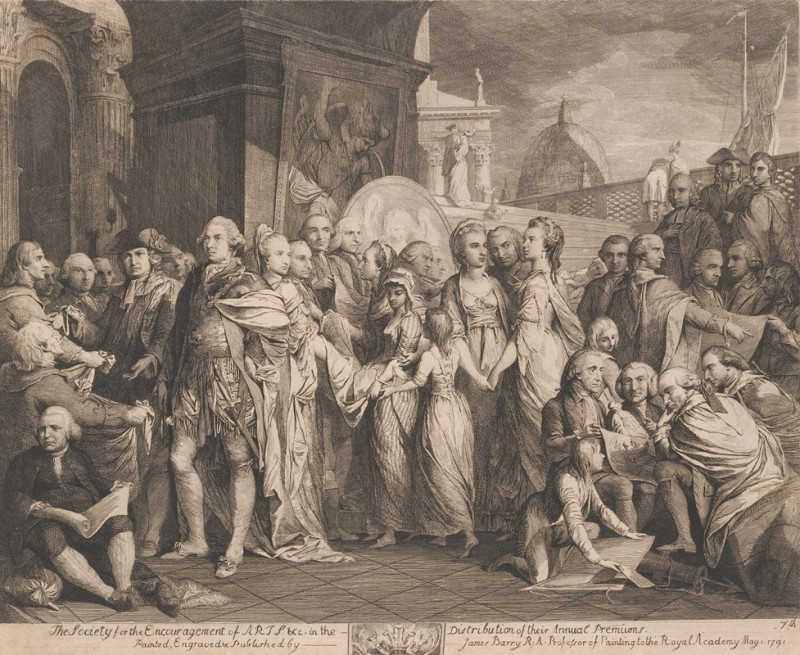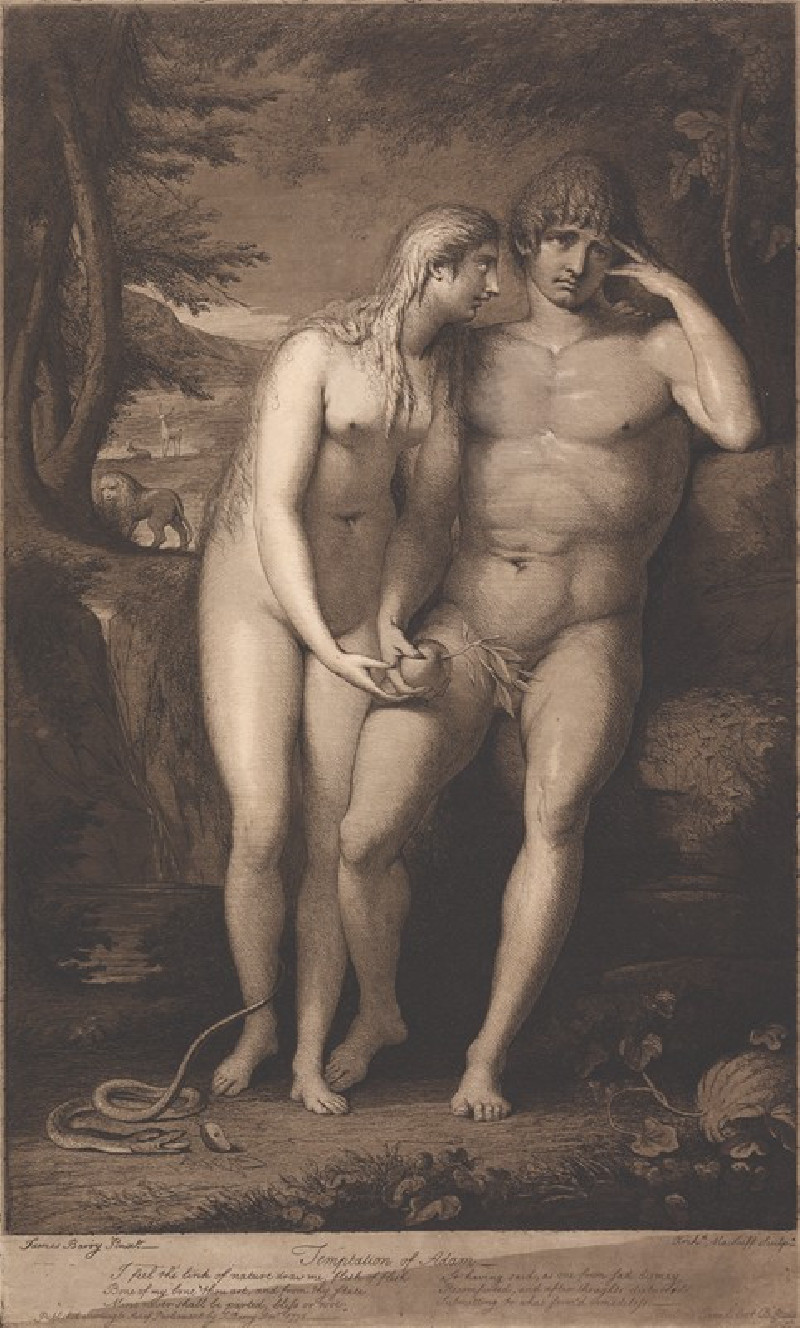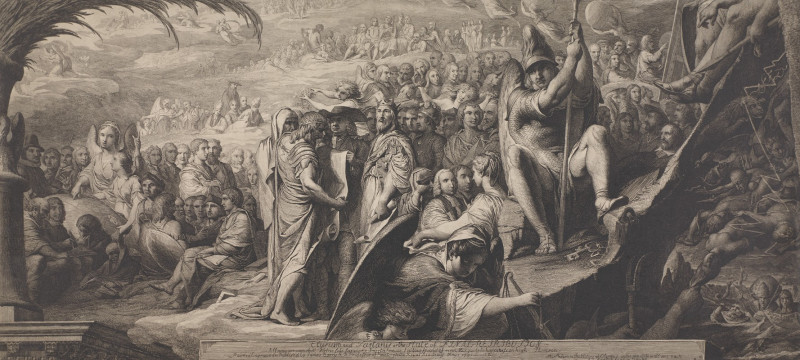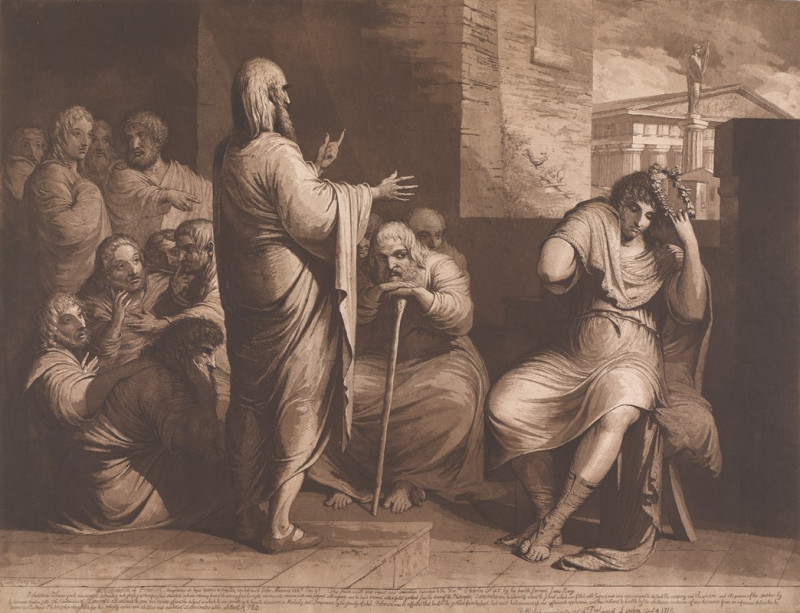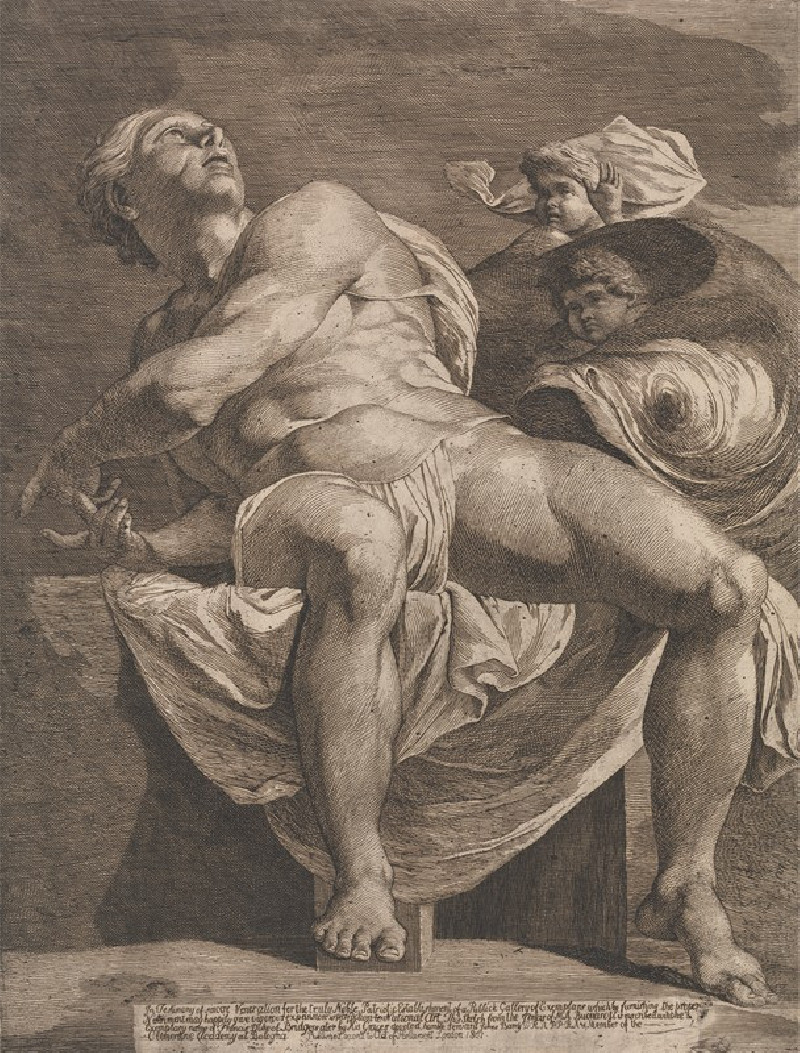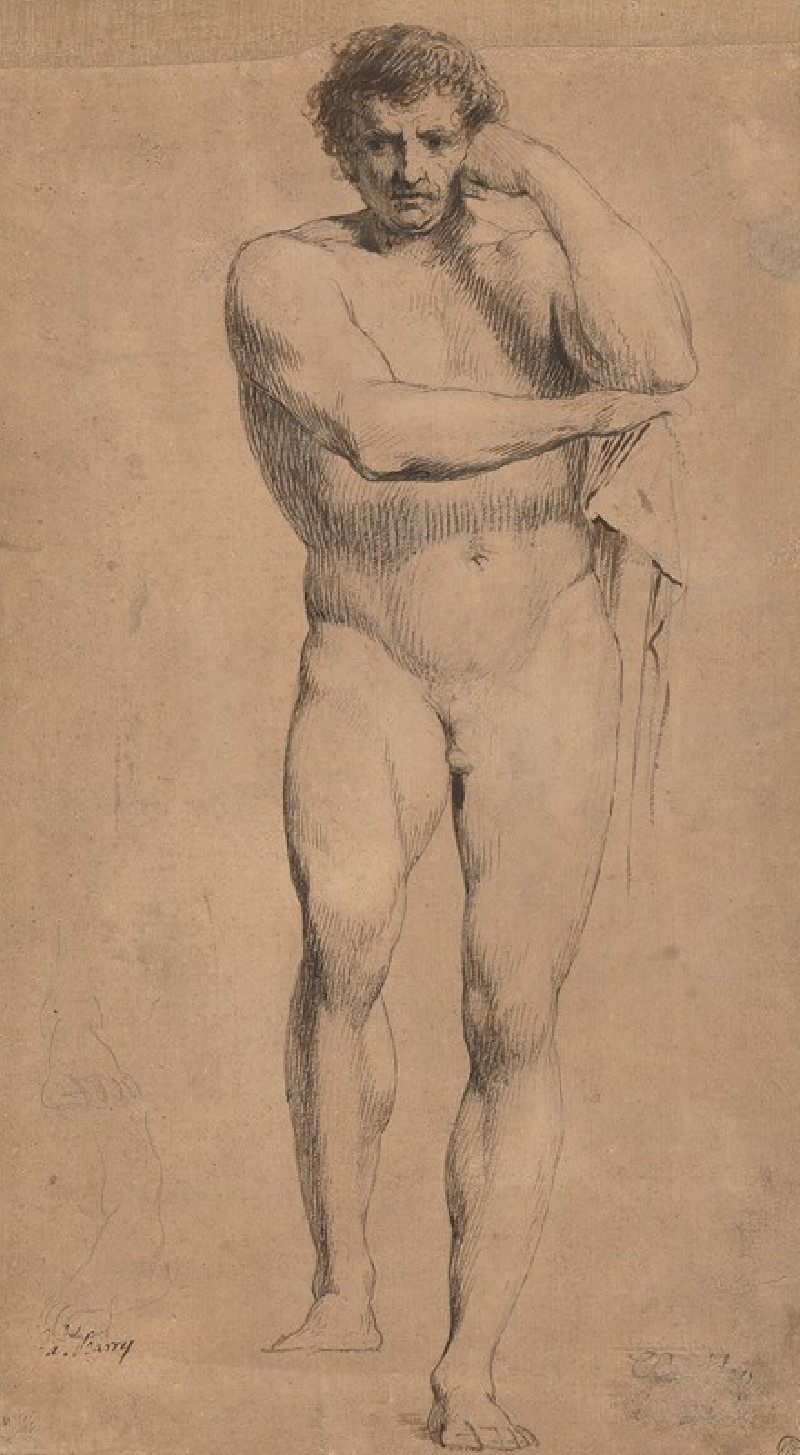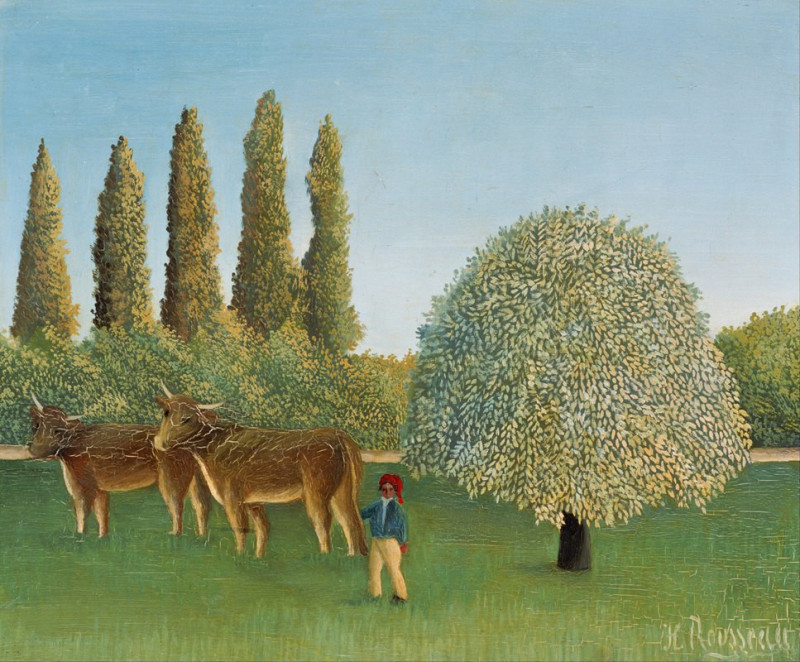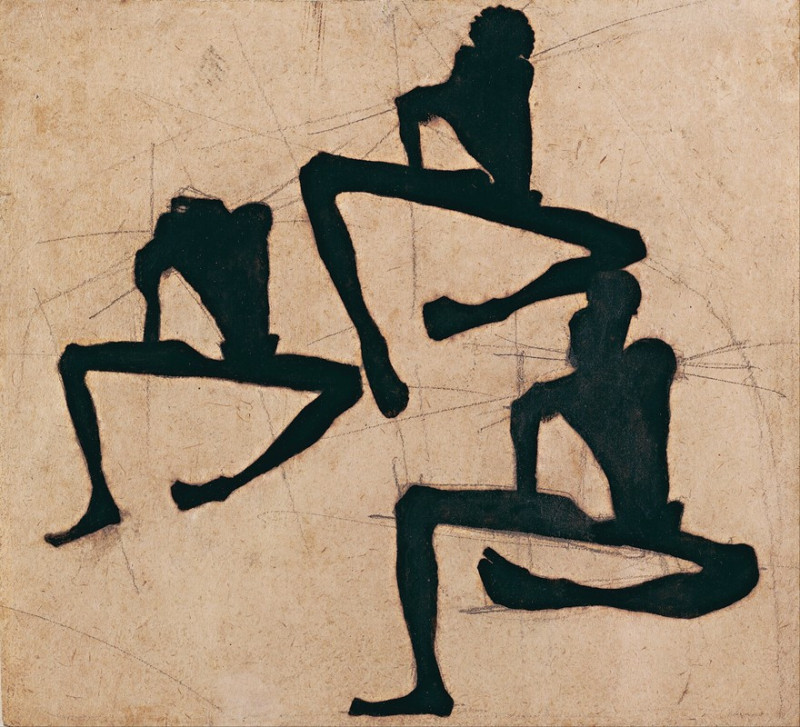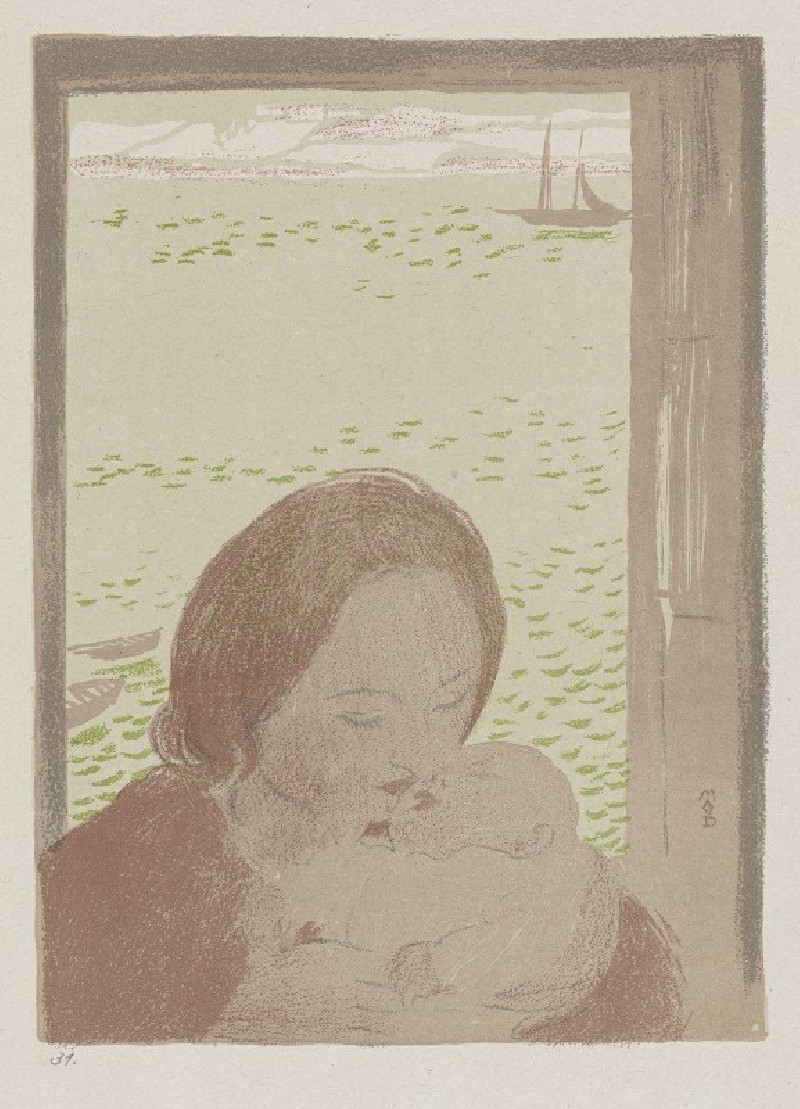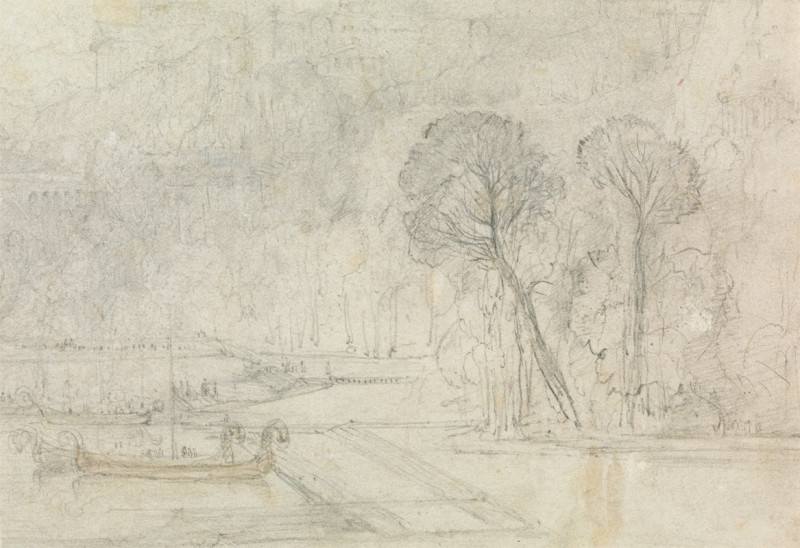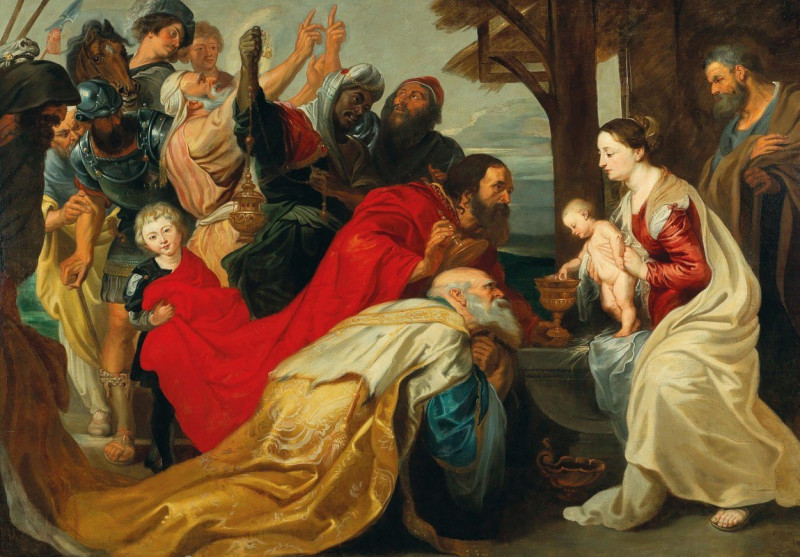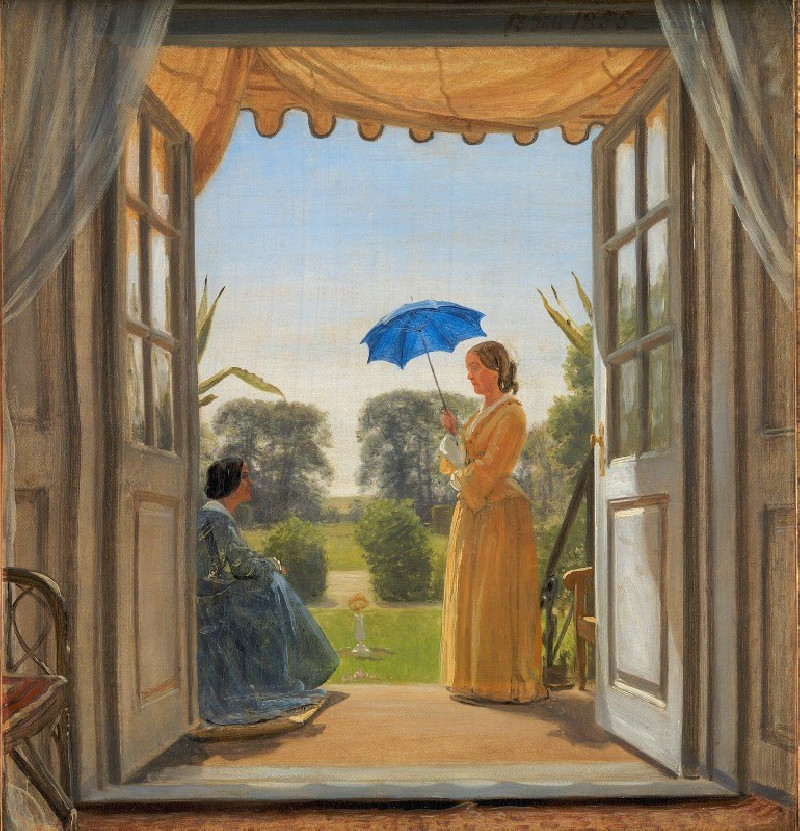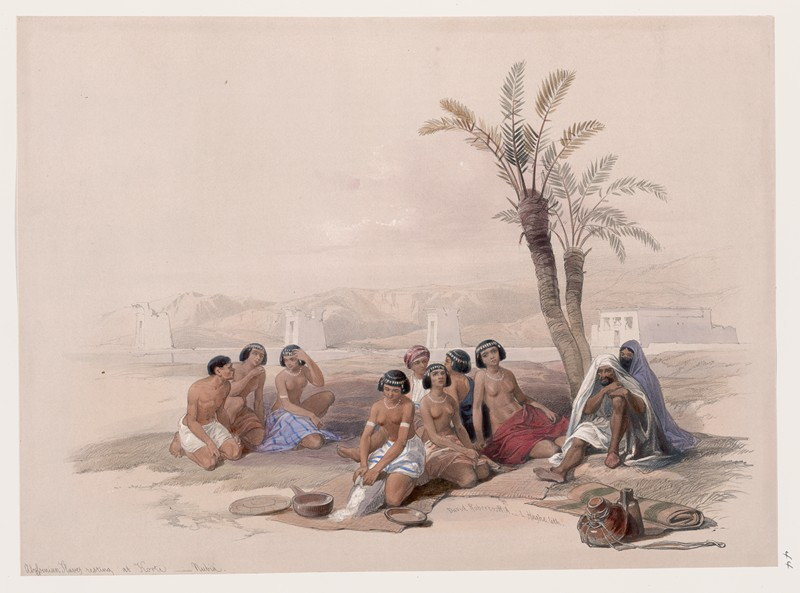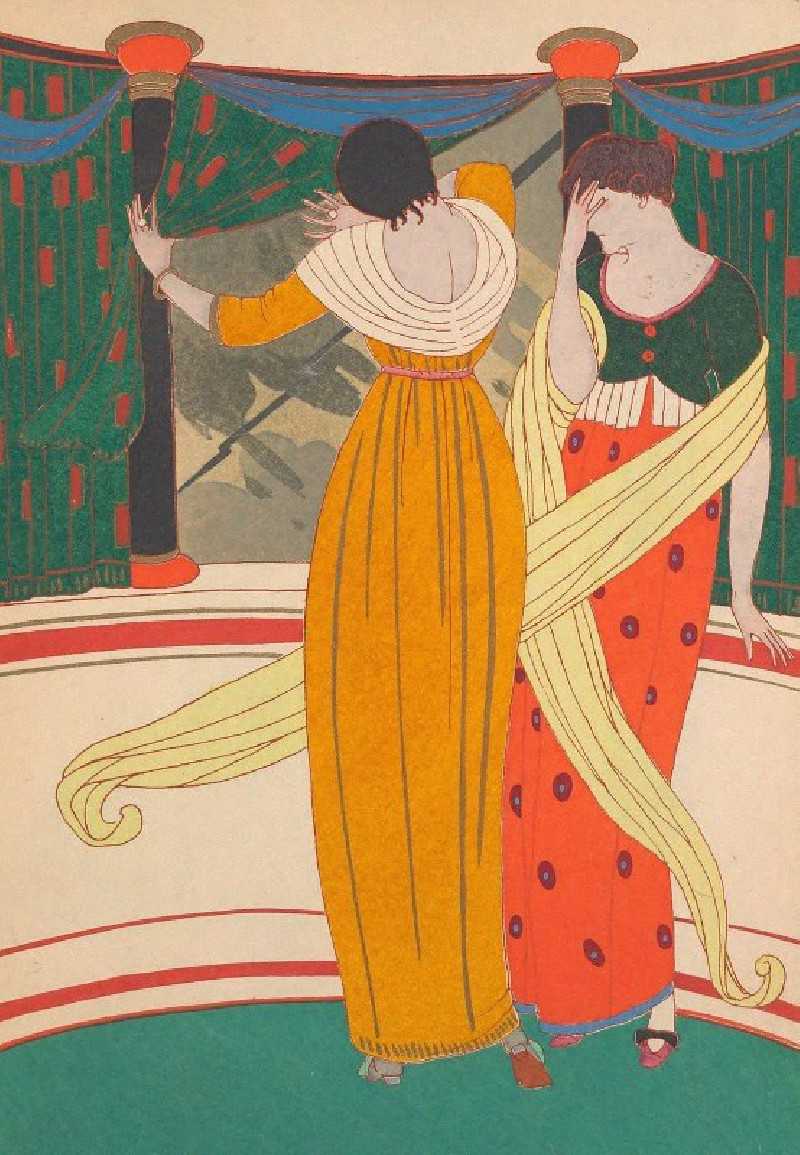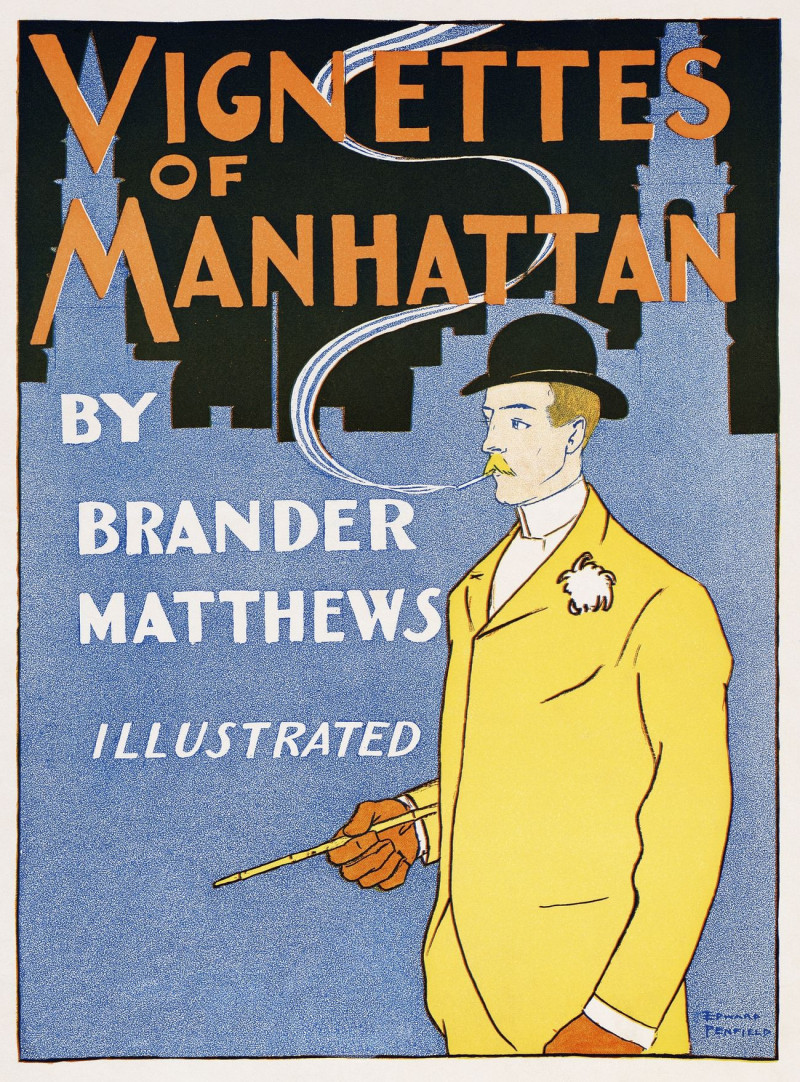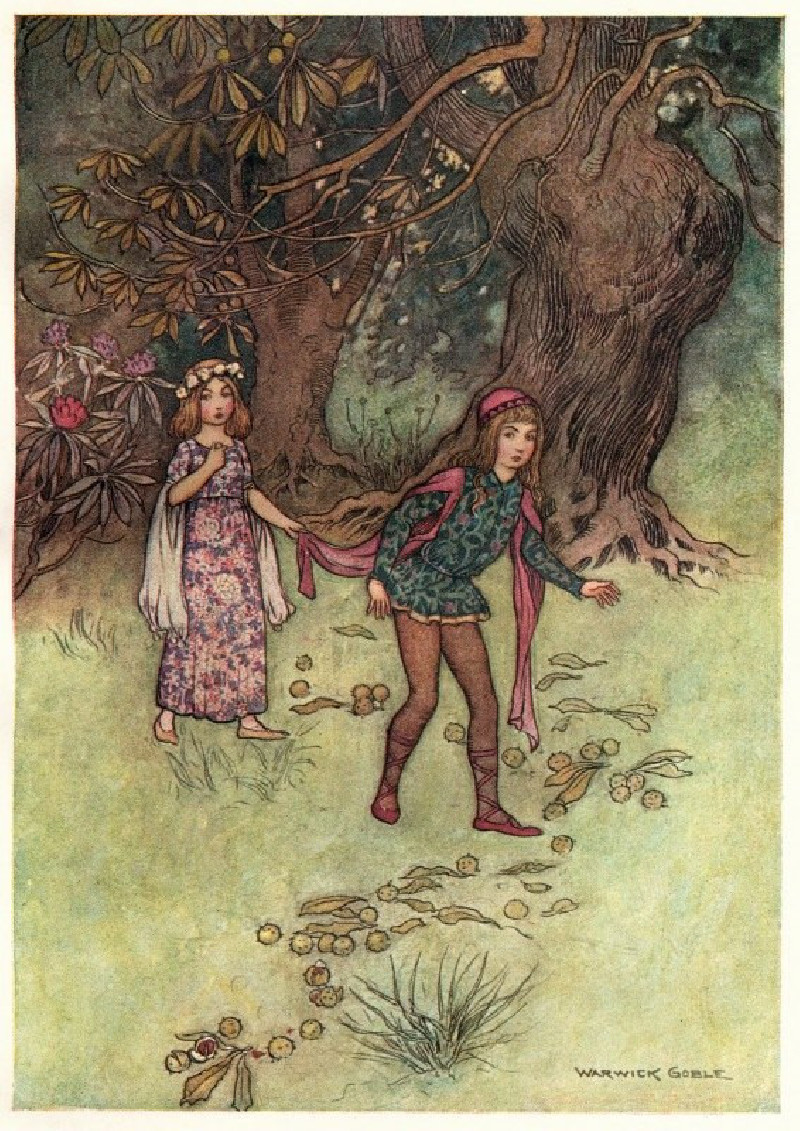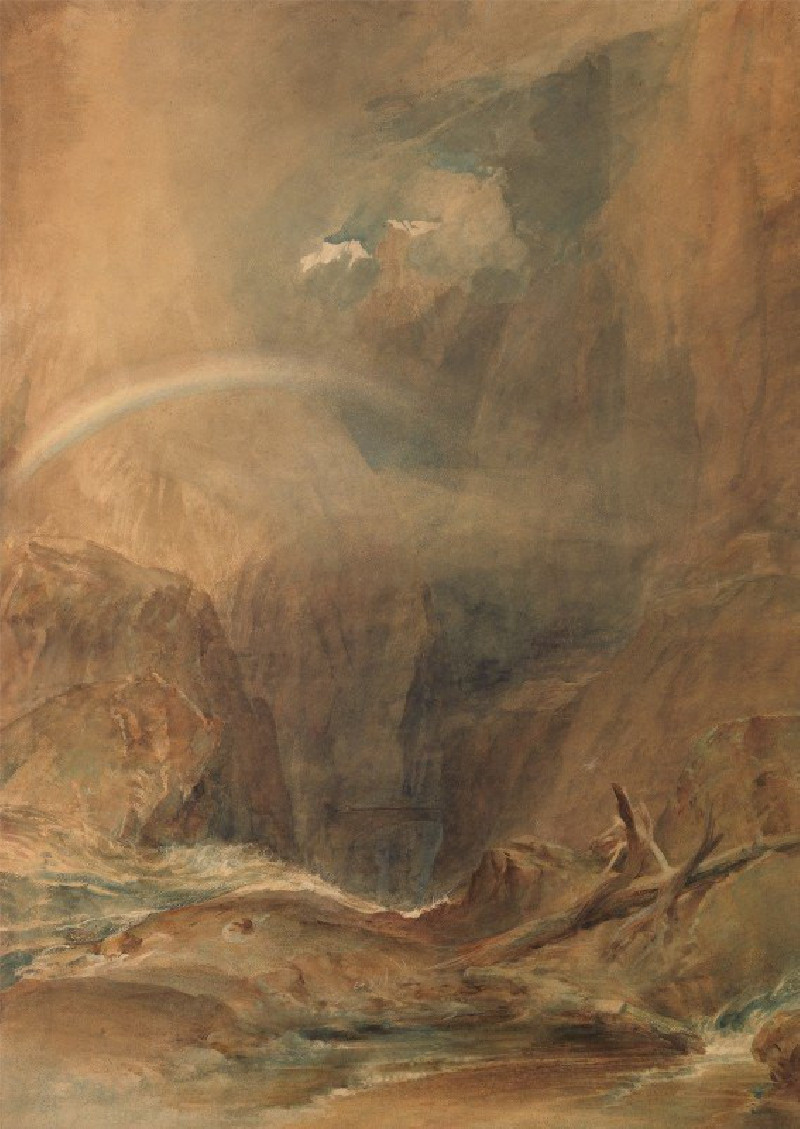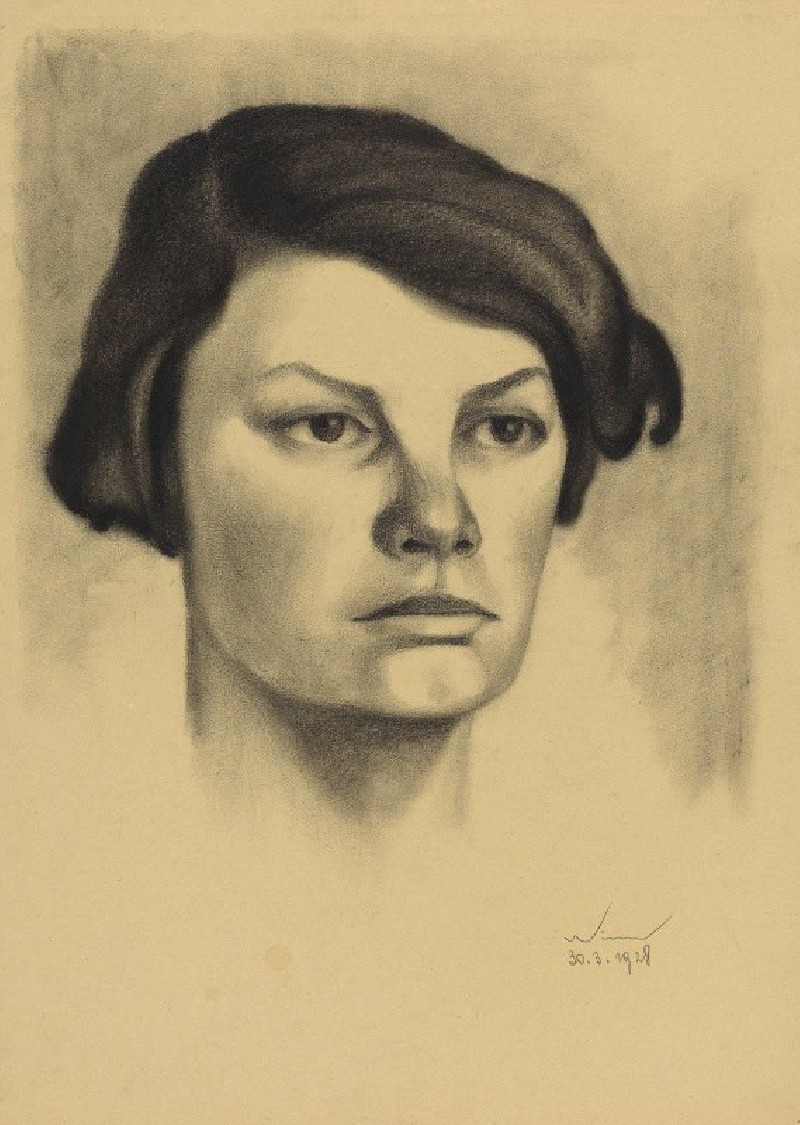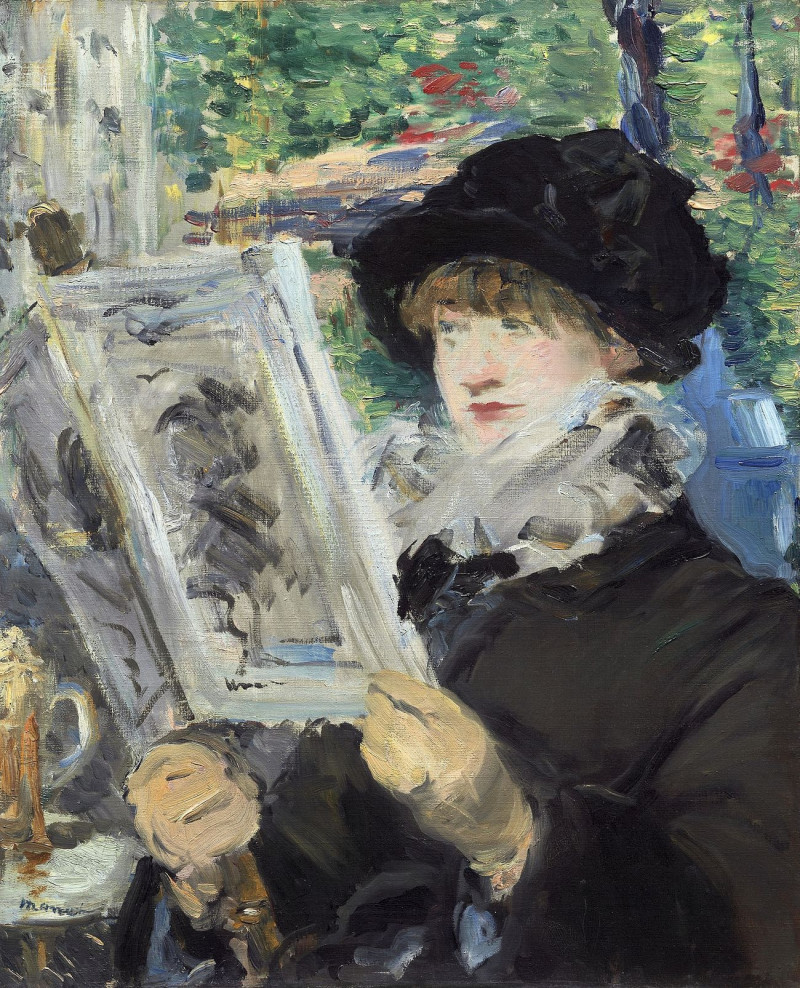Eastern Patriarch (1803)
Technique: Giclée quality print
Recommended by our customers
More about this artwork
"Eastern Patriarch" (1803) by James Barry is a striking etching that captures the intensity and emotional depth characteristic of the artist's work. The central figure in this powerful image is an elderly man, whose expressive pose and dramatic gesture dominate the composition. His face, etched with lines of age and experience, is tilted upwards, with one hand dramatically pressed against his forehead, suggesting a moment of deep despair or profound revelation.The stark, dynamic lines used to depict the man's flowing hair and beard add a vigorous texture that contrasts with the smooth, open landscape in the background. This landscape features a tranquil scene with distant mountains, adding a serene yet somber context to the man's tumultuous expression. The subtle details in the background give a sense of depth and openness, emphasizing the isolation and intensity of the patriarch's experience.Barry's mastery in etching is evident in the delicate yet confident strokes that define both the figure and the surrounding environment.
Delivery
Returns
James Barry (11 October 1741 – 22 February 1806) was an Irish painter, best remembered for his six-part series of paintings entitled The Progress of Human Culture in the Great Room of the Royal Society of Arts in London. Because of his determination to create art according to his own principles rather than those of his patrons, he is also noted for being one of the earliest romantic painters working in Britain, though as an artist few rated him highly until the fully comprehensive 1983 exhibition at the Tate Gallery led to a reassessment of this "notoriously belligerent personality”, who emerged as one of the most important Irish artists. He was also notable as a profound influence on William Blake.


